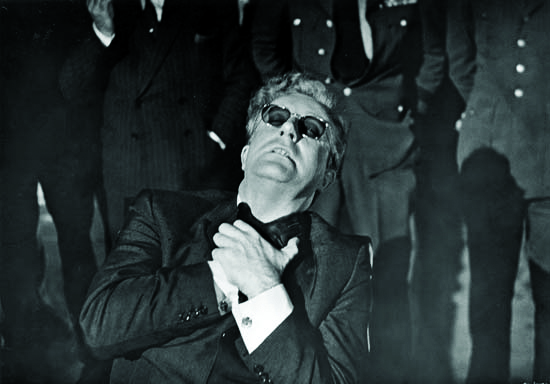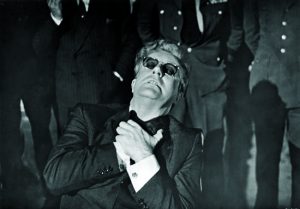
By Matthew Gulick

Sometimes I feel jealous of Cold War kids. The only thing they had to worry about was sudden death in a fiery nuclear inferno. For today’s Tide Pod generation this potentiality is relegated to one problem among many popping up in our Twitter feeds.
Then again, the machine gun pace of cataclysmic record-shattering news delivered instantaneously into every facet of our lives means that society nowadays only has an attention span of a few days at best. On the other hand, collective inability to remain focused pales in comparison to the individual’s. At the personal level we can call up distractions with so few and such habitual motions that oftentimes we find ourselves diverted before our subconscious anxiety has any real time to bubble up to the surface. Apocalyptic concerns deliver only short bursts of intense fear with each schoolyard insult flare-up between the United States and North Korea.
Unfortunately these fears become less and less pressing as society is anesthetized via repeat injections from the various news media. For example, will residents of Hawaii be as worried the next time the nuclear warning lights up their phone?
Things were slightly different in the 1960s. People tuned into the same nightly broadcasts regarding Soviet Russia, practiced the same shelter drills at school and saw the same fallout shelter advertisements in Life magazine, which created a nation focused and ready for nuclear holocaust at any second. Society listened to one wavelength of concern, concentrating fears into a singular overwhelming panic. The two main nuclear states harnessed this collective fear as a political tool in hopes of preventing the nightmare from ever becoming a reality.
Stanley Kubrick created his 1963 black comedy “Dr. Strangelove or: How I Learned to Stop Worrying and Love the Bomb” to satirize this grave yet absurd attitude. After noticing parallels between his era and our own the English Department pointedly screened “Dr. Strangelove” in Rausch Auditorium. The screening came as part of a series of films based on novels; Kubrick wrote the screenplay after reading Peter George’s thriller “Red Alert,” adapting it to serve his comedic aims.
The film draws out the absurdity of power placed in the hands of potentially-less-than-stable people, turning the book’s anxious dread into anxious laughter. In an uncanny fashion our American reality today performs a similar action with the movie by taking the absurdity of the film to an even more extreme degree.
55-year-old spoilers ahead.
“Strangelove” ends in the detonation of the Soviet doomsday device promising to shroud the Earth in 99 years of radioactive fallout. This is the result of General Jack D. Ripper, of Burpleson Air Force Base, exceeding his authority and ordering the bombing of the U.S.S.R because he believes there is a global communist conspiracy to sap and impurify American’s precious bodily fluids via fluoridation of the water supply. In some ways, President Trump bears marked similarities to General Ripper. For one, they both seem to believe that “war is too important to be left to the politicians,” sharing scorn for the traditional diplomacy that prevents vaporization of entire population centers. For another, Ripper keeps his gun among his golf clubs behind the office door. While the New York Times may know that the president drinks 12 Diet Cokes per day, the location of any potential Oval Office guns remain unknown. Smart money is on the golf clubs though (the phallic imagery is probably just too strong for him to resist.)
The real President of the United States bears little resemblance to Kubrick’s fictional one, a level-headed man of diplomacy who readily commits to sacrificing American lives instead of allowing an unjustified peremptory strike. He does, however, find some kinship in the character of U.S.A.F. General Buck Turgidson, a trigger happy gum-chewing man of loud exuberance and strong opinions. While Turgidson hates the “Ruskis,” a significant divergence from Trump’s take on Putin, they both share an affinity for masculinity in objects. When the fictional president seeks to bring the Russian ambassador into the War Room, Turgidson protests by shouting “But he’ll see everything! He’ll see the big board!” eerily mirroring Trumps subtweet @KimJongUn declaring “I too have a nuclear button, but it is a much bigger & powerful one than his.”
Perhaps the most troubling resemblance comes from Dr. Strangelove himself, the eccentric “former” Nazi scientist developing weapons for the U.S. military. As the fallout rises and the end of the world is nigh, Strangelove proposes sealing off some small segment of the U.S. population in mineshafts in order to repopulate the Earth when it becomes rehabitable. Of course, the plan he proposes requires some selection process to ensure the best possible chance of repopulation. While he outlines the plan, Strangelove finds himself unable to prevent his arm from rising in a Nazi salute or addressing the president as “mein Fuhrer.” I’m sure if Trump had to pick between him and some protestors he would be able to find “good people on both sides.”
In all, it feels like the current leader of the free world embodies certain aspects of all the absurd characters in Kubrick’s film combined, a combination that creates its own geopolitical crises out of sheer stupid incompetence instead of an arms race for global hegemony. While this is certainly frightening it also means reality satirizes itself, providing the same helpless laughs “Dr. Strangelove” gave us in order to keep the full-blown existential panic marginally contained.
“Blade Runner 2049” is next in the English Department’s series. Screening on Tues. Feb. 20. Free admission. Approximately as uplifting.
